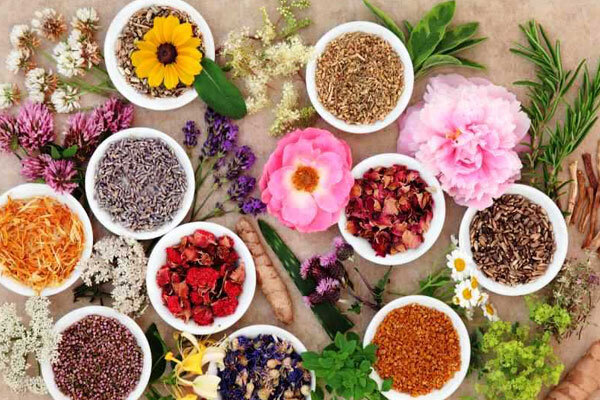Medicinal plants hold potential for realizing surge in production

TEHRAN – Medicinal plants are creating a new and fast-growing economy so that many countries are rapidly investing in this field. Iran's high potential in the production of medicinal herbs provides an opportunity for realizing the national goal of 'Surge in Production.
The use of medicinal and aromatic plants extends beyond the pharmaceutical industry to other industries such as coloring, flavoring, cosmetics, health, insecticides and herbicides, perfumery, fragrances, and food industries.
Herbal plants use has grown exponentially due to man's re-orientation to nature and natural products, the side effects of synthetic materials, and the discovery of new drugs from natural compounds that have complex chemical structures that are difficult to synthesize or sometimes impossible, have led to the establishment of a large market for these plants.
Before the advent of modern pharmaceutical science, humans relied solely on herbal and natural remedies to treat their diseases. The use of herbal remedies to treat many common ailments is still practiced in many parts of the world, especially in developing countries.
The World Health Organization believes that in the third millennium, in addition to developing countries, the use of medicinal plants and traditional medicines in developed countries is also increasing significantly.
In Iran, as in other parts of the world, the demand for domestic consumption and export of medicinal plants is growing.
8,000 herbal species grow in Iran
So far, about 30,000 plant species are identified in the world, with Iran's share of about 8,000 species that its plant diversity is more than the whole of Europe.
Currently, about 2,300 species of medicinal plants have been identified in the country; while medicinal plants account for one-third of the medicines used in human societies, the share of world trade in these products is about $124 billion and Iran’s share is $570 million, which is only 0.5 percent of the total.
The Sixth Development Plan envisages the rehabilitation of 9.6 million hectares of rangeland and medicinal plant habitats and cultivation of medicinal plants in 100,000 hectares.
The per capita consumption of medicinal plants in Iran is about one kilogram of dried plants, in other words, 83,000 tons of medicinal plants worth 1.2 trillion rials (around $29 million at an official rate of 42,000 rials) are consumed in the country, while in Europe this amount is 900 grams and in the United States is 2.5 kilograms.
224,000 ha under cultivation of medicinal herbs
Hossein Zeynali, director of medicinal plants project of Ministry of Agriculture, announced the increase of 25,000 hectares of medicinal plants cultivation, adding that currently, 224,000 hectares of area is under cultivation of medicinal herbs.
During the last 2 years, we focused mainly on the development of a number of medicinal plants such as saffron, rosemary, and Persian cumin, that their cultivation is high in the country and brought an export revenue of $400 million annually, he said.
There are also a number of medicinal plants that used to be harvested from forests and pastures, which have always had a very good export market; herbs like Persian shallot and Zataria have a good market in the world but have not been working on, he explained.
Zeynali went on to note that we highly support these products’ harvest, because they are highly demanded by other countries, and we are looking to expand production.
On the other hand, we had a shortage of some products in the country, such as black caraway, which was imported 3-4 thousand tons per year, however, 1000 to 1,500 hectares are now growing the plant, he emphasized.
Also, in the next two years, by increasing the quality or mechanization of these products, the comparative advantage of these products will increase compared to other countries, and we will certainly be the main exporters in the coming years, he also said.
Iran to be a leading herb exporter
Due to the increase in the exchange rate, many of the industries start using Iranian products and essential oils, before this, many factories used synthetic products and are now using these traditional and natural products.
Statistics show that the consumption of medicinal plants in the country has become processed, and decreased imports by $50-60 million, on the other hand, increased the exports, he noted.
He went on to say that we also focus on plants that countries need, so we move in two directions, one is to increase exports and the other is to reduce imports.
So, we cultivated non-native plants such as ginger, turmeric, and cinnamon, and we hope to harvest these products in greenhouses in the coming years and meet the needs of the country, Zeynali stated.
He further explained that we have polarized the country and now, for example, in Sistan-Baluchestan and Kerman, we have grown plants such as henna tree and Hibiscus tea, and in provinces of Fars, Isfahan, and Kerman, Damask rose is being planted, while Kermanshah and Hamedan, black caraway and coriander.
Next year, we plan to completely cultivate Persian shallot in the Zagros forests, in addition to celery, so that increase exports and exchange rates while meeting the country's needs, he said, highlighting, for the development of medicinal plants, between 10 to 20 trillion rials (nearly $238 million at the official rate of 42,000 rials) are allocated annually.
FB/MG
